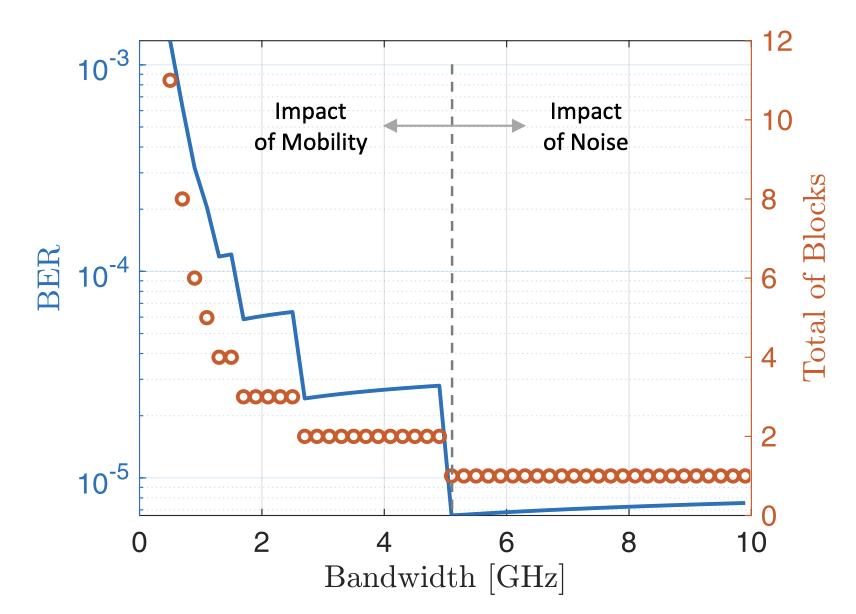Literature Database Entry
labella2007division
Thomas Halva Labella, "Division of Labour in Groups of Robots," PhD Thesis, Faculte des Sciences Appliquees, Université Libre de Bruxelles, March 2007. (Advisors: Marco Dorigo and Falko Dressler)
Abstract
In this thesis, we examine algorithms for the division of labour in a group of robot. The algorithms make no use of direct communication. Instead, they are based only on the interactions among the robots and between the group and the environment. Division of labour is the mechanism that decides how many robots shall be used to perform a task. The efficiency of the group of robots depends in fact on the number of robots involved in a task. If too few robots are used to achieve a task, they might not be successful or might perform poorly. If too many robots are used, it might be a waste of resources. The number of robots to use might be decided a priori by the system designer. More interestingly, the group of robots might autonomously select how many and which robots to use. In this thesis, we study algorithms of the latter type. The robotic literature offers already some solutions, but most of them use a form of direct communication between agents. Direct, or explicit, communication between the robots is usually considered a necessary condition for co-ordination. Recent studies have questioned this assumption. The claim is based on observations of animal colonies, e.g., ants and termites. They can effectively co-operate without directly communicating, but using indirect forms of communication like stigmergy. Because they do not rely on communication, such colonies show robust behaviours at group level, a condition that one wishes also for groups of robots. Algorithms for robot co-ordination without direct communication have been proposed in the last few years. They are interesting not only because they are a stimulating intellectual challenge, but also because they address a situation that might likely occur when using robots for real-world out-door applications. Unfortunately, they are still poorly studied. This thesis helps the understanding and the development of such algorithms. We start from a specific case to learn its characteristics. Then we improve our understandings through comparisons with other solutions, and finally we port everything into another domain. We first study an algorithm for division of labour that was inspired by ants’ foraging. We test the algorithm in an application similar to ants’ foraging: prey retrieval. We prove that the model used for ants’ foraging can be effective also in real conditions. Our analysis allows us to understand the underlying mechanisms of the division of labour and to define some way of measuring it. Using this knowledge, we continue by comparing the ant-inspired algorithm with similar solutions that can be found in the literature and by assessing their differences. In performing these comparisons, we take care of using a formal methodology that allows us to spare resources. Namely, we use concepts of experiment design to reduce the number of experiments with real robots, without losing significance in the results. Finally, we apply and port what we previously learnt into another application: Sensor/Actuator Networks (SANETs). We develop an architecture for division of labour that is based on the same mechanisms as the ants’ foraging model. Although the individuals in the SANET can communicate, the communication channel might be overloaded. Therefore, the agents of a SANET shall be able to co-ordinate without accessing the communication channel.
Quick access
Contact
BibTeX reference
@phdthesis{labella2007division,
author = {Labella, Thomas Halva},
title = {{Division of Labour in Groups of Robots}},
advisor = {Dorigo, Marco and Dressler, Falko},
institution = {Faculte des Sciences Appliquees},
month = {3},
school = {Universit{\'{e}} Libre de Bruxelles},
type = {PhD Thesis},
year = {2007},
}
Copyright notice
Links to final or draft versions of papers are presented here to ensure timely dissemination of scholarly and technical work. Copyright and all rights therein are retained by authors or by other copyright holders. All persons copying this information are expected to adhere to the terms and constraints invoked by each author's copyright. In most cases, these works may not be reposted or distributed for commercial purposes without the explicit permission of the copyright holder.
The following applies to all papers listed above that have IEEE copyrights: Personal use of this material is permitted. However, permission to reprint/republish this material for advertising or promotional purposes or for creating new collective works for resale or redistribution to servers or lists, or to reuse any copyrighted component of this work in other works must be obtained from the IEEE.
The following applies to all papers listed above that are in submission to IEEE conference/workshop proceedings or journals: This work has been submitted to the IEEE for possible publication. Copyright may be transferred without notice, after which this version may no longer be accessible.
The following applies to all papers listed above that have ACM copyrights: ACM COPYRIGHT NOTICE. Permission to make digital or hard copies of part or all of this work for personal or classroom use is granted without fee provided that copies are not made or distributed for profit or commercial advantage and that copies bear this notice and the full citation on the first page. Copyrights for components of this work owned by others than ACM must be honored. Abstracting with credit is permitted. To copy otherwise, to republish, to post on servers, or to redistribute to lists, requires prior specific permission and/or a fee. Request permissions from Publications Dept., ACM, Inc., fax +1 (212) 869-0481, or permissions@acm.org.
The following applies to all SpringerLink papers listed above that have Springer Science+Business Media copyrights: The original publication is available at www.springerlink.com.
This page was automatically generated using BibDB and bib2web.

